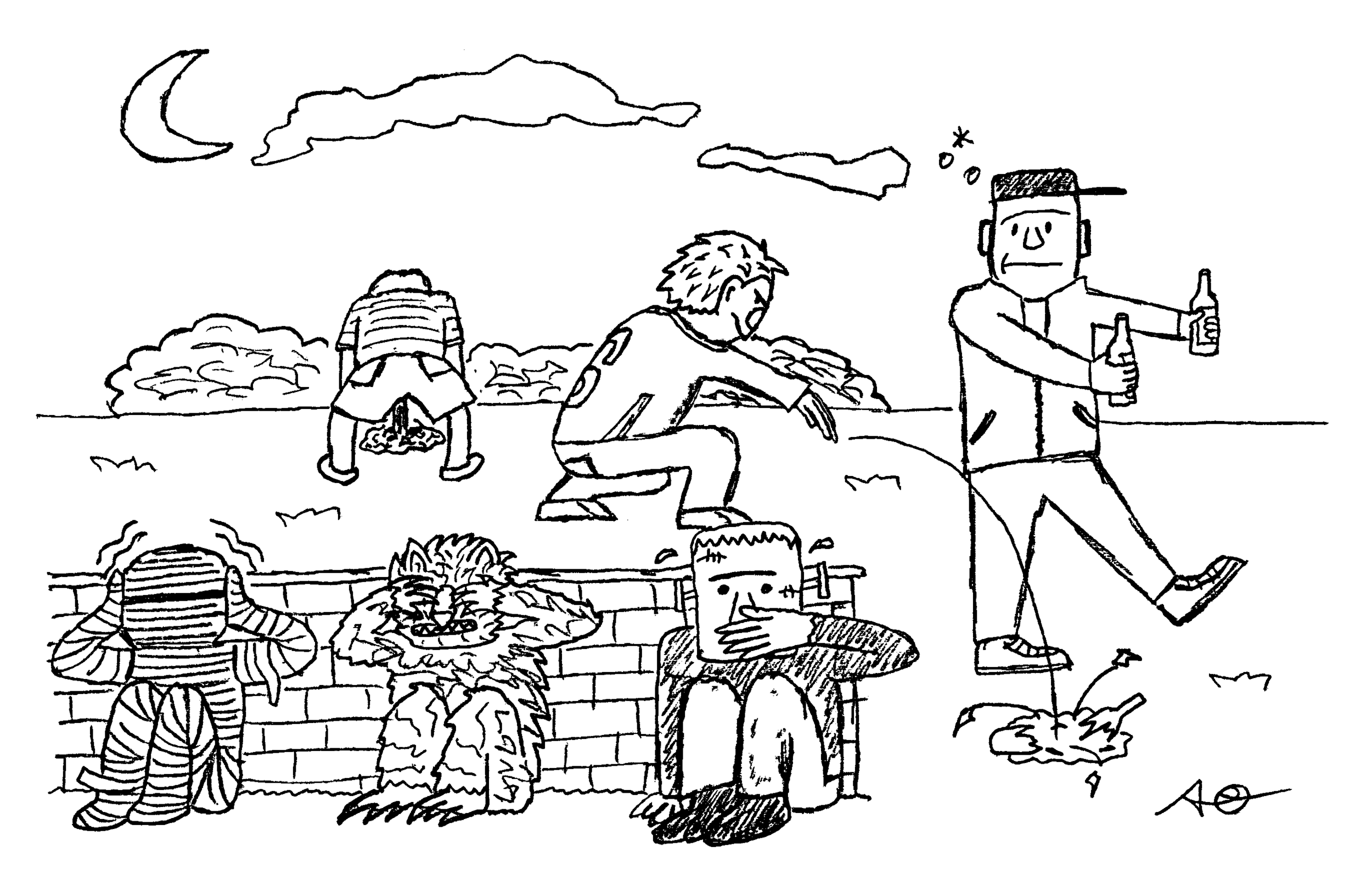I never thought I would produce a serialized comic, let alone write a blog to accompany it. Somehow, the latter makes the former more real - and makes me more committed to seeing this through. But a global pandemic makes one do strange things and of all the strange things one could possibly do during this time, this isn’t so bad.
My history with reading comics is equally sporadic as my history with making them. Virtually all of my comics lexicon is derived from what was available at the local branch of my library, which, fortunately for me, was pretty extensive. As such, my comics diet has mostly consisted of graphic novels and collected trade paperbacks; I’ve never been in on the ground floor for a series and read issues as they came out. I would check out stacks of comics at a time and just tear through them. I was much too impatient to have to wait every Wednesday to see the story through.
Comics from Hilltopics, the literary arts magazine at SMU
In college, my consumption dropped off almost entirely, having lost access to my repository which was now over 1000 miles away. In its place, I took up making comics for the campus literary arts magazine. It was a low bar, low commitment project, just a single comic (often consisting of a single panel) every month or so. Each issue of the magazine had a central theme or core issue, so my comic usually followed suit and touched on the social/political topic of the hour. I certainly had things I wanted to say, but as to my success in conveying them through the comic form… I’ll just say it was hit and miss. Having recently gone through and organized my old sketches and illustrations, I was hard pressed to find one comic during that time that did not make me cringe. I had no idea what I was doing. I often pulled inspiration from a writer or artist that I was fond of at the time (and by pull inspiration, I mean very strongly emulate). And for goodness’ sake, I edited my comics in Microsoft Paint!
I’ve always been attracted to autobiographical comics. To me, the medium is perfectly suited to serve the needs of a memoir. Each panel is effectively an illustrated snapshot capturing a moment in time, a sliver of experience. It’s not a contiguous representation however; otherwise you’d just be “reading” the frames of a film strip. And unlike film, you have the added benefit of verbiage, being able to elucidate thoughts and desires in the context of the scene. This unique interplay is what gives the form its function: the images present an event as it happened and the words interpret that event after it’s over.
As my intrigue with autobiographical works such as Fun Home and American Splendor continued to mount, my enthusiasm for the droll, one-off comics I cobbled together for the arts magazine started to fade. I stepped away from that format and pivoted to the first incarnation of Day and Age. I knew I wanted to make a comic about everyday life, highlighting commonplace experiences while offering my own personal commentary. At the time, I was even less confident in my illustration skills than I am now, so I sought the assistance of another student to provide the artwork. I had never collaborated on that level before, so there was certainly a learning curve. After a few attempts at bringing a polished comic to fruition, the curve declared itself too steep and I left the endeavor on the wayside. Sadly, a good amount of those materials may be lost to time, but luckily the creative spark from that original concept has found new life all these years later.
Rough layouts from the first iteration of Day and Age
So that’s a little bit about how I got here. Going forward, I will write a new Deconstructed post with every new comic I publish. Happy reading and stay safe out there.







